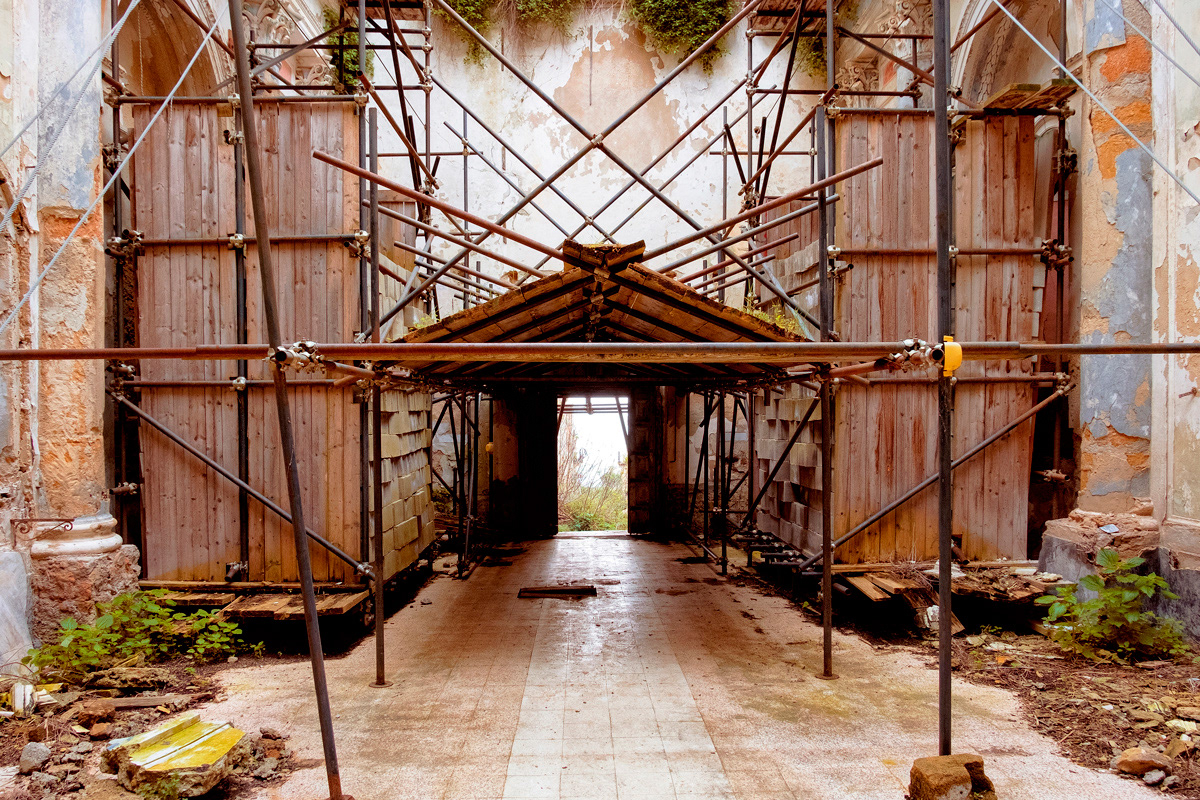
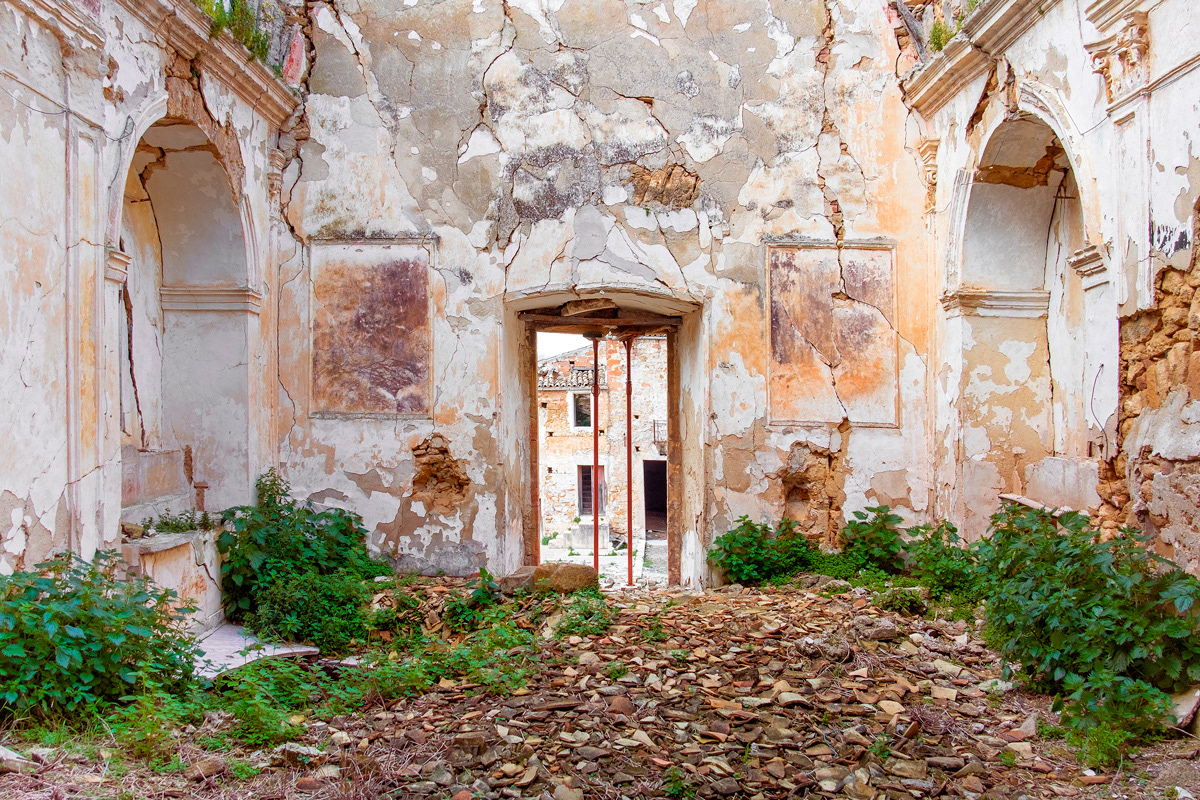
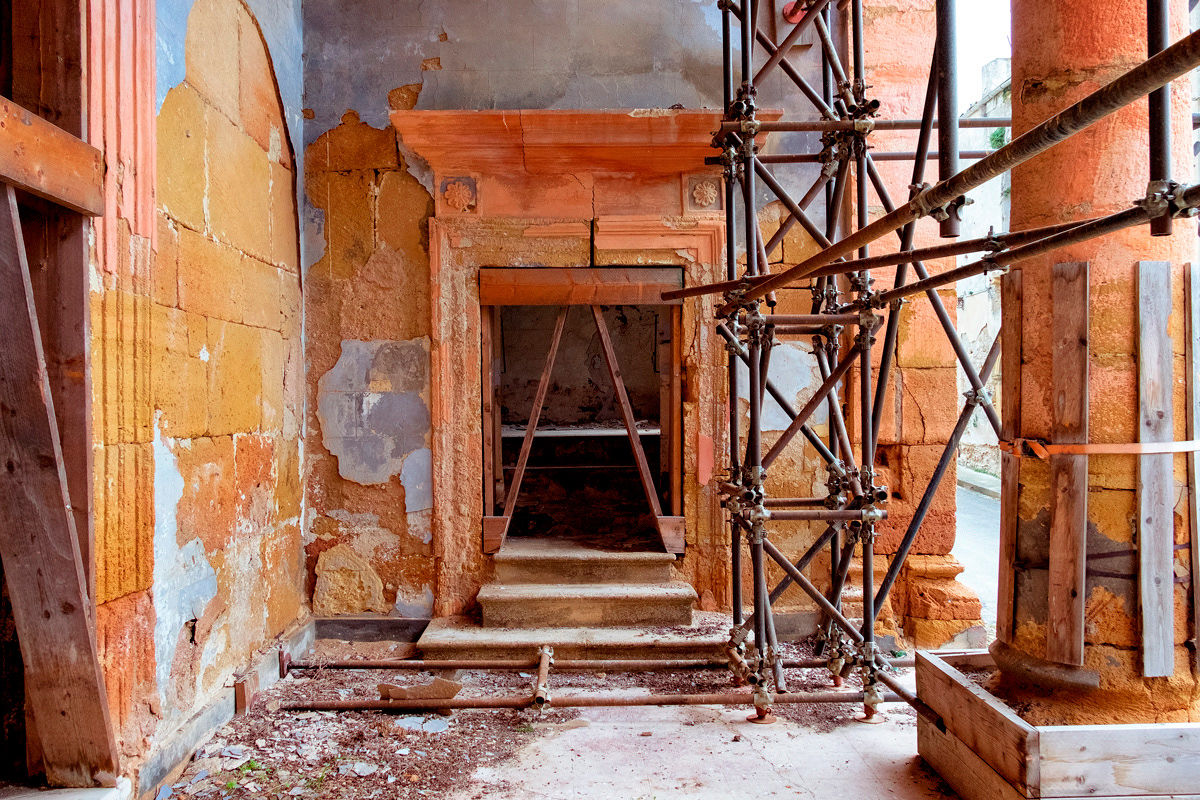

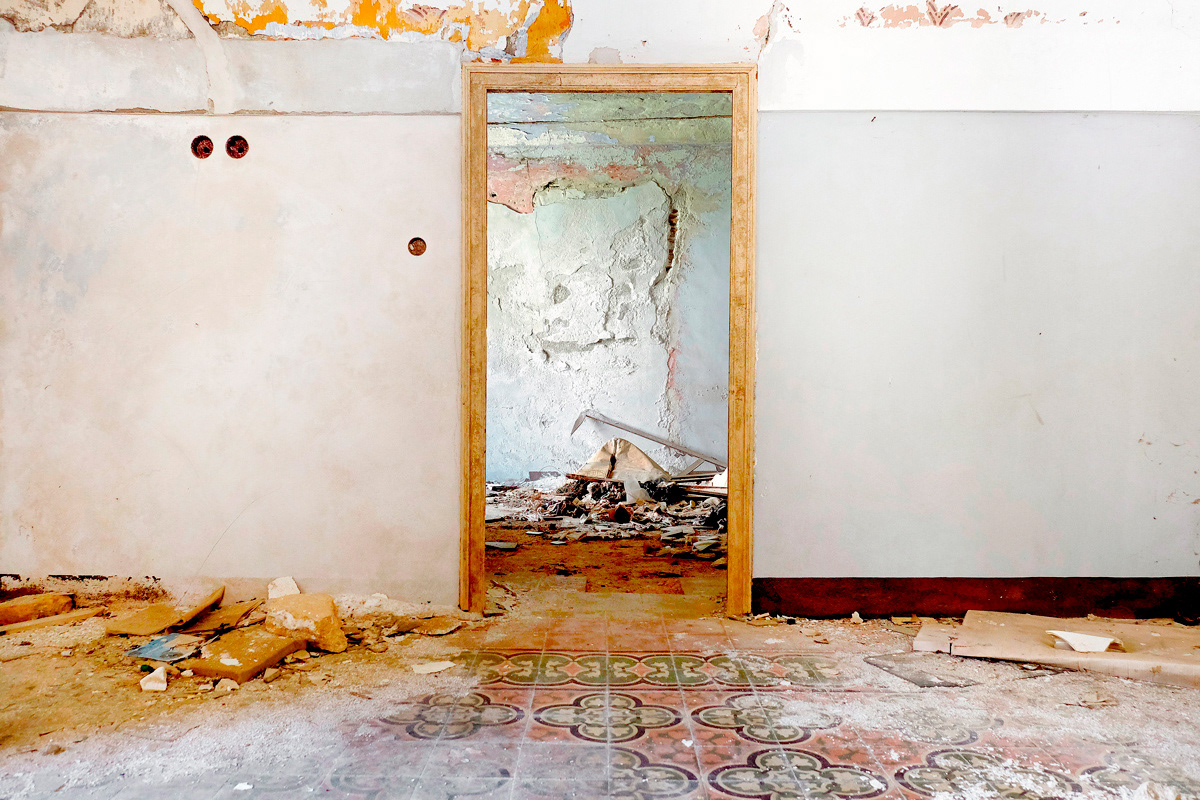
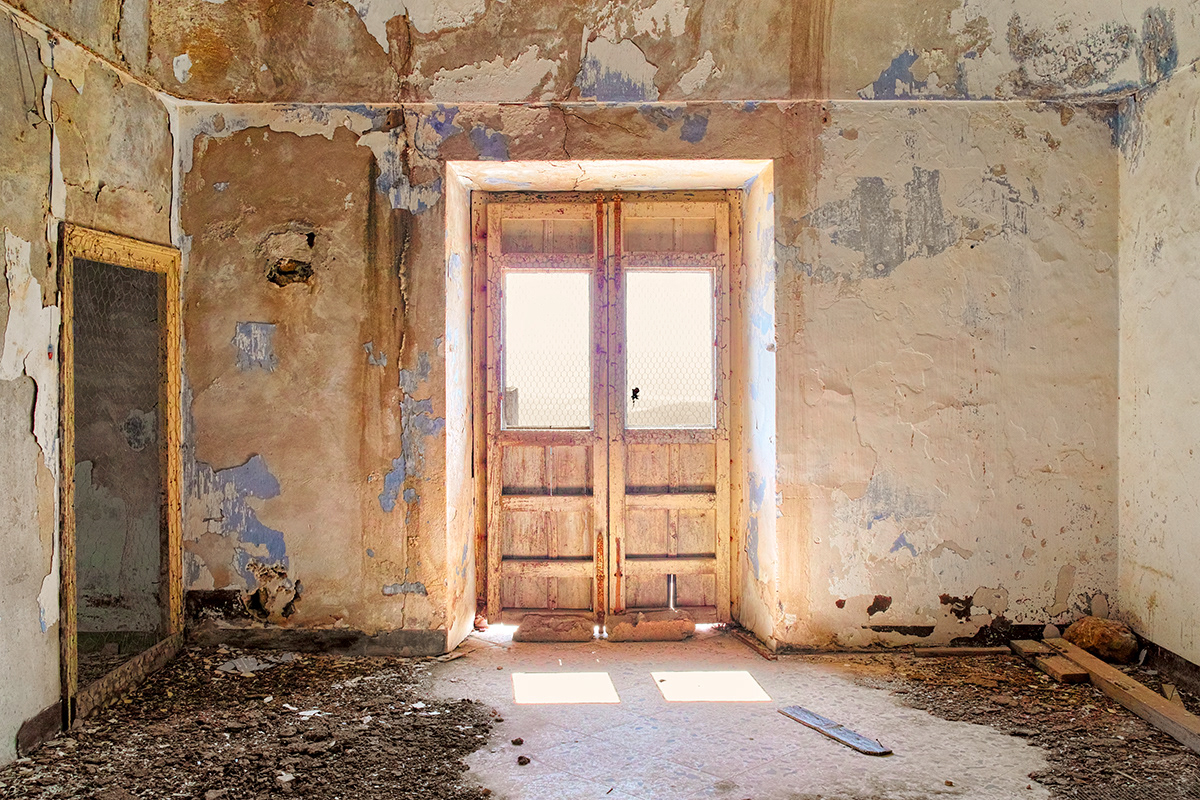
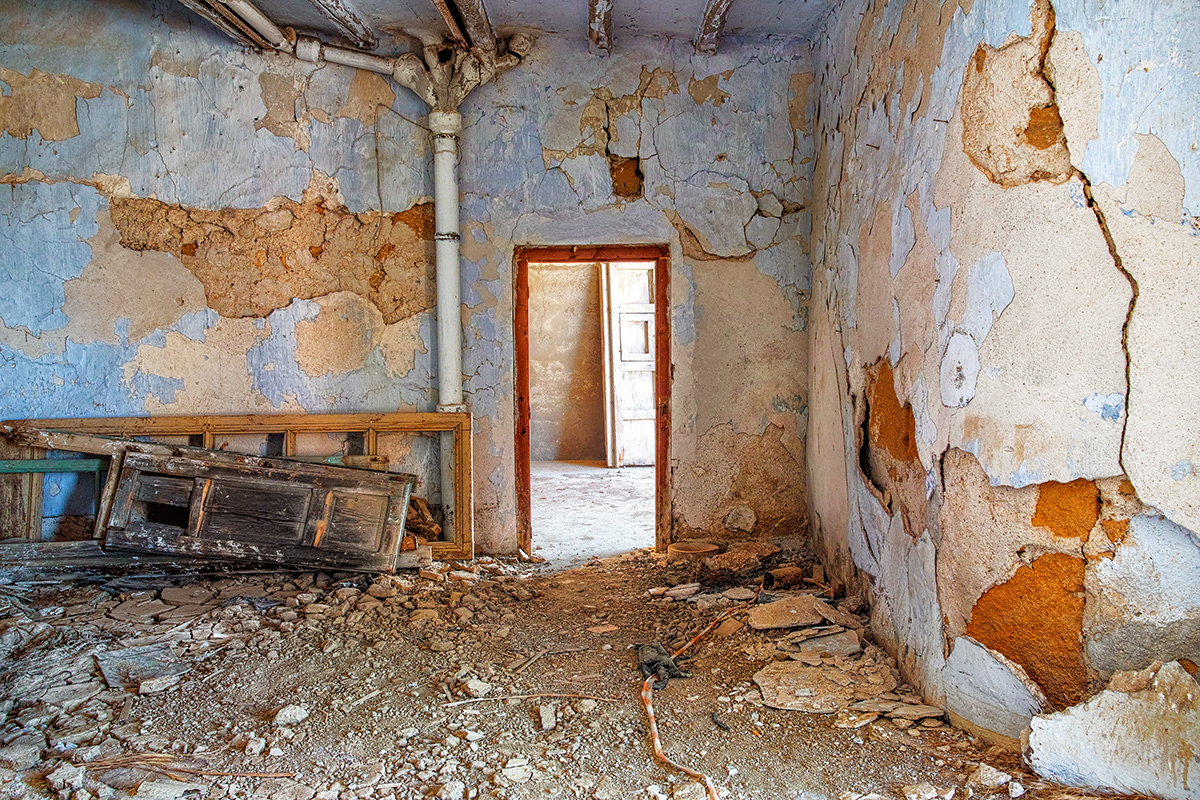
[English] "The earthquake must be an impressive event for everyone; since our childhood we have considered the earth as a kind of solidity, but the earth swings like a thin crust beneath our feet; we feel the littleness of so much vaunted power of man when we see in an instant the collapse of man-made works. " Charles Darwin, "Narrative of the Surveying Voyages of His Majesty's Ships Adventure and Beagle ", 1839. On 15th January 1968 I was seven and it is still alive in me the memory when me and my father we went near the town hall of my city, where there was a whole movement of people: there were those who was carrying clothes, food, cardboard boxes full of I don't know what; everybody were busy in a frantic but heartfelt human race solidarity, some trucks were leaving loaded of the aid that the people of my small town in the province of Ragusa could and would give to those who had fallen in the drama in the before night. In the cold night between 14th and 15th January 1968, thousands of doors were opened in the houses of the Belice Valley in Sicily. Cold and trembling hands grasped quickly the doors half-closed only just a few hours before to make way a well deserved sleep after a day of hard work, but it was a watchful sleep because some warning shocks there had been in the afternoon of 14th January. The doors have been opened also in Poggioreale: here thousands of people pushed out of their homes, fleeing into the street or in the main squares in the dark, in fear, with screams, groans and with their hearts in the throat; in the valley of Belice 370 people (furtunately only 3 in Poggioreale) they do not had the time to open those doors, succumbing among the rubble of tufa and roof tiles. After nearly fifty years those doors are still there, as unaware witnesses to what happened, they are a fictitious and an ephemeral protection for the abandoned houses of a ghost town, where the death and the destruction they visited that tragic night of 1968, severing lives, hopelessly injuring elegant residences and humble homes. Before the earthquake Poggioreale was a pretty little baroque town, with palaces of the nobles, the small theater, the square with the social club, the inn, the oil mill. Now it remains only the disconsolate vision of the ruins of the interior of the houses, of the churches, of the facades, of the streets, of the few squares, of the recently restored water hole, of the school, near the which we can see the boxes in masonry of the theater with its hemicycle and the dressing rooms for artists. Here the time is suspended, the clock does not go forward. After the earthquake it was decided to do not restore the ruins of Poggioreale, considering their recovery uneconomic and highly dangerous. The town was rebuilt a few kilometers downstream, with modern and futuristic buildings at that time, but with considerable wastage of public money, with much carelessness due to poor coordination of post-earthquake interventions and to the inevitable and shameful speculative infiltrations. About that, after the Irpinia earthquake in 1980, the President of the Italian Republic Sandro Pertini said in his speech to the nation: “What happened in Belice not must be repeated again ...I went on a visit to Sicily. And in Palermo they were the parish priest of Santa Ninfa with his fellow citizens to complain of this: that after 13 years in Belice the promised houses have not been built yet. The earthquake victims are still living in the shacks. But the necessary money was earmarked...Who has speculated on this misfortune of Belice? And if there is someone who has speculated, I wonder: is this man in prison, as it should be in prison? Because for me the greater infamy is to speculate on the misfortunes of others ". In 1992 in Santa Margherita I entered in one of those shacks, where 24 years after the earthquake several people were still living in cramped conditions permeated by a persistent and unbreathable smell of mold. But over time in Poggioreale the Phoenix is reborn from the ashes, although mutated and a little further downstream, leaving us the image of what was his true face before 15th January. Where the nature expresses his uncontrollable force, man can live with it fearing it, respecting it and reacting appropriately to the adverse fate. [Italiano] “Il terremoto deve essere per ognuno un avvenimento che fa impressione; la terra, che fin dalla nostra infanzia, abbiamo considerato come tipo di solidità, oscilla come una crosta sottile sotto i nostri piedi; e vedendo le opere fatte dall'uomo rovesciate in un istante, sentiamo la piccolezza della sua tanto vantata potenza”. Charles Darwin, “Viaggio di un naturalista intorno al mondo”, 1839. Avevo sette anni il 15 gennaio del 1968 e vivo è ancora in me il ricordo di quando con mio padre ci recammo nei pressi della casa comunale del mio paese, dove era tutto un ribollire di persone: c'era chi portava vestiti, chi cibo, chi scatoloni di cartone pieni di non so che cosa; tutti si davano da fare in una frenetica ma sentita gara di solidarietà umana, partivano camion carichi di quell'aiuto che la gente del mio piccolo paese della provincia di Ragusa poteva e voleva dare a chi la notte prima era piombato nel dramma. Nella fredda notte tra il 14 e il 15 gennaio del 1968 migliaia di porte furono spalancate nelle case della valle del Belice. Mani infreddolite e tremanti afferrarono in fretta gli usci solo appena qualche ora prima socchiusi per dar luogo, dopo una giornata di duro lavoro, ad un meritato ma vigile riposo causato dalle scosse di avvertimento avutesi nel pomeriggio del 14 gennaio. Le porte furono aperte anche a Poggioreale: qui nel buio, fra paura, urla, gemiti e col cuore in gola, migliaia di persone si spinsero fuori dalle loro case, fuggendo in strada o nelle piazze principali; molti, solo 3 a Poggioreale ma 370 in tutta la Valle del Belice, non ebbero il tempo di aprire quelle porte, soccombendo tra le macerie di tufo e tegole. Quelle porte dopo quasi cinquant'anni sono ancora li, testimoni inconsapevoli di ciò che è accaduto, costituiscono una fittizia ed effimera protezione per le case abbandonate di un paese da allora fantasma, dove la morte e la distruzione hanno fatto visita quella tragica notte del 1968, tranciando vite, lesionando irrimediabilmente eleganti dimore e umili abitazioni. Poggioreale prima del sisma era un grazioso paesino, con i palazzotti dei nobili, il piccolo teatro, la piazza con il circolo, la locanda, il frantoio. Oggi non rimane che la sconsolata visione dei resti degli interni delle case, delle chiese, delle facciate, delle vie, delle poche piazze, dell'abbeveratoio recentemente restaurato, della scuola, nelle adiacenze della quale si scorgono i palchetti in muratura del teatro con il suo emiciclo e i camerini degli artisti. Qui il tempo è sospeso, non va più avanti. Dopo il terremoto fu deciso di non restaurare i ruderi di Poggioreale, ritenendo il loro ripristino non economico ed altamente insicuro. Il paese venne ricostruito alcuni chilometri più a valle, con strutture moderne e avveniristiche per l'epoca, ma con ingenti sprechi di denaro pubblico, all'insegna del pressappochismo dovuto alla scarsa coordinazione degli interventi post-sisma oltre che alle immancabili e vergognose infiltrazioni speculative. A tal proposito Sandro Pertini, nel discorso alla nazione dopo il terremoto in Irpinia del 1980 ebbe a dire: “Non deve ripetersi quello che è avvenuto nel Belice...Sono andato in visita in Sicilia. Ed a Palermo venne il parroco di Santa Ninfa con i suoi concittadini a lamentare questo: che a distanza di 13 anni nel Belice non sono state ancora costruite le case promesse. I terremotati vivono ancora in baracche: eppure allora fu stanziato il denaro necessario...Mi chiedo: dove è andato a finire questo denaro? Chi è che ha speculato su questa disgrazia del Belice? E se vi è qualcuno che ha speculato, io chiedo: costui è in carcere, come dovrebbe essere in carcere? Perché l’infamia maggiore, per me, è quella di speculare sulle disgrazie altrui”. Nel 1992 a Santa Margherita sono entrato in una di quelle baracche, dove a distanza di 24 anni dal sisma ancora diverse persone convivevano in angusti spazi permeati da un persistente e irrespirabile acre odore di muffa. Ma a Poggioreale col tempo l'araba fenice è rinata dalle ceneri, anche se mutata e un po' più a valle, lasciandoci l'immagine di quello che era il suo vero volto prima del 15 gennaio 1968. Quando la natura esprime la sua forza incontrollabile, l'uomo può convivere con essa temendola, rispettandola e reagendo opportunamente all'avverso destino.






